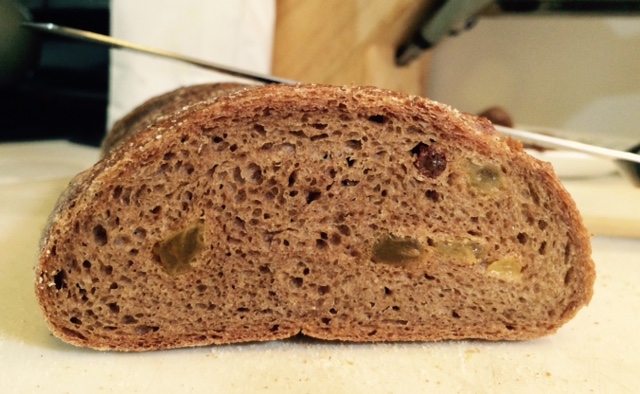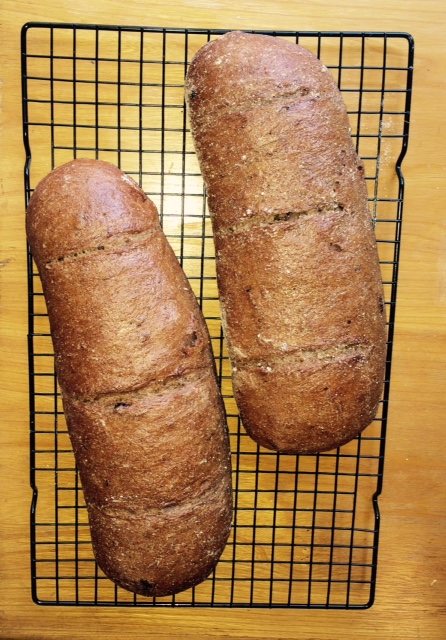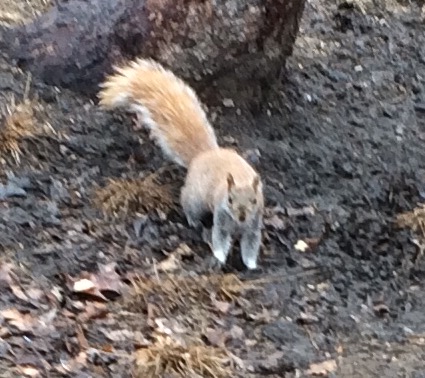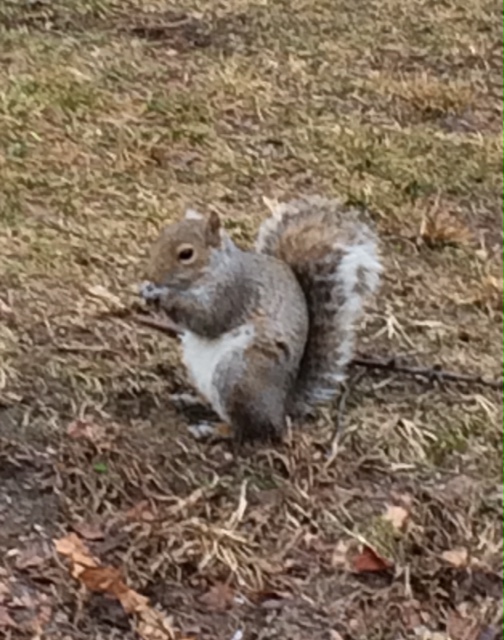“It was the best of times, it was the worst of times…It was the spring of hope, it was the winter of despair….”
And here in the northeast, winter 2015 just didn’t know when to quit! Don’t get me wrong, winter is not my season of discontent; I love the snow and bracing winds. But at some point, enough is enough! I’m ready for spring and flowers. I've spent a good part of this winter trying recreate a loaf that comes close to my recollection of the Raisin pumpernickel bread from my youth…not to put it on a pedestal or anything. Here’s a few pix of the first several tries.

 This was from Greenstein's Secrets of a Jewish Baker.
This was from Greenstein's Secrets of a Jewish Baker.


This one's from the Silver Palate Cookbook, and there was a no-knead version...Something just wasn't right, and I'm continually misjudging the fermenting time - usually too short...
I even did some research; here’s a few slices from a well-known bakery across town. It looks great, but...
 it doesn't taste much like rye at all. It’s very light; in fact you can actually see right through the crumb. That’s not the pumpernickel I remember. My ideal is a dark, chocolate brown, a little dense and chewy, studded with raisins. Deciding I needed a heftier rye flour to continue on this quest, I ordered of bag of coarse pumpernickel meal (from nybakers.com). It's even coarser than I expected.
it doesn't taste much like rye at all. It’s very light; in fact you can actually see right through the crumb. That’s not the pumpernickel I remember. My ideal is a dark, chocolate brown, a little dense and chewy, studded with raisins. Deciding I needed a heftier rye flour to continue on this quest, I ordered of bag of coarse pumpernickel meal (from nybakers.com). It's even coarser than I expected.
After setting it to ferment, I took a walk in the park. It was the first day of spring.
 Central park is really lovely in the snow.
Central park is really lovely in the snow.
The next day I mixed the coarse rye sour with the final dough ingredients. Basically I followed the formula from ITJB, using the coarse rye meal for the final build of the rye sour, (first build was medium rye). I added 1T each of molasses, espresso powder and cocoa powder in lieu of the caramel color, otherwise I followed the formula as is. The dough seemed a bit dry, but I figured the coarse meal was just thirstier…so I went with it. All seemed to be going well…the loaf expanded nicely in bulk ferment and in the final proof. Although, to be honest I find it tricky to judge whether it’s double or triple it’s size, still I was hopeful. After the loaf came out of the oven I went for another walk. All the snow from the day before had melted and lo and behold…

Finally, the first harbinger of spring. I felt like she was smiling at me! Unfortunately, the change of seasons did not cause the pumpernickel raisin gods to smile upon me. ;-(
My loaf was too dense - although I loved the texture of the coarse meal and I thought the flavor was very nice.

I then stumbled upon an errata sheet for ITJB (didn’t know about that..) and discovered that I should have added another 1/2 C of water - sigh! Teaches me to trust my instincts when the dough seems too dry. Oh well, looking on the bright side, I’m one step closer, I’ve got some old slices ready to be added as altus on the next try. And…the squirrels really like my breads. I think they’re getting to know me.



If any of you trouble-shooters out there can give me some advice I’d be very appreciative. I’m wondering if I should soak (or scald?) the coarse meal before using it in the rye sour. And if so, how much water? how long to soak and do I drain it afterwards? Would some yeast water open up the crumb in this type of bread? Also,with regard to the coarse rye meal, do I have to keep it in the freezer? If I use it up in say, 3 months, can it remain in a room temp cupboard?
Thanks and happy spring to those of you in the northern hemisphere!
Cherie
- Cher504's Blog
- Log in or register to post comments
pumpernickel flour. Leaving it at cupboard temperature depends on just exactly what it is. Right now in central Connecticut, my house temperature hovers around 60 degrees so I keep all my flour in the kitchen and long term storage in the downstairs freezer. Once we get a warm spell, I'm probably going to move all the flour into freezer. We don't air condition unless interior temp goes over 80 dF and the house can get very warm in the summer. And if its a hot summer, I'll be doing less frequent baking and freezing more!
Wendy
I'll check out KA Pumpernickel flour next time. Meanwhile I've still got a big bag of this coarse meal to play around with. I recently took Tartine 3 out of the library and he has a chapter of breads with coarsely milled grains used as soakers and/or cooked into porridge. I'm looking forward to trying some of those.
Cheers!
Cherie